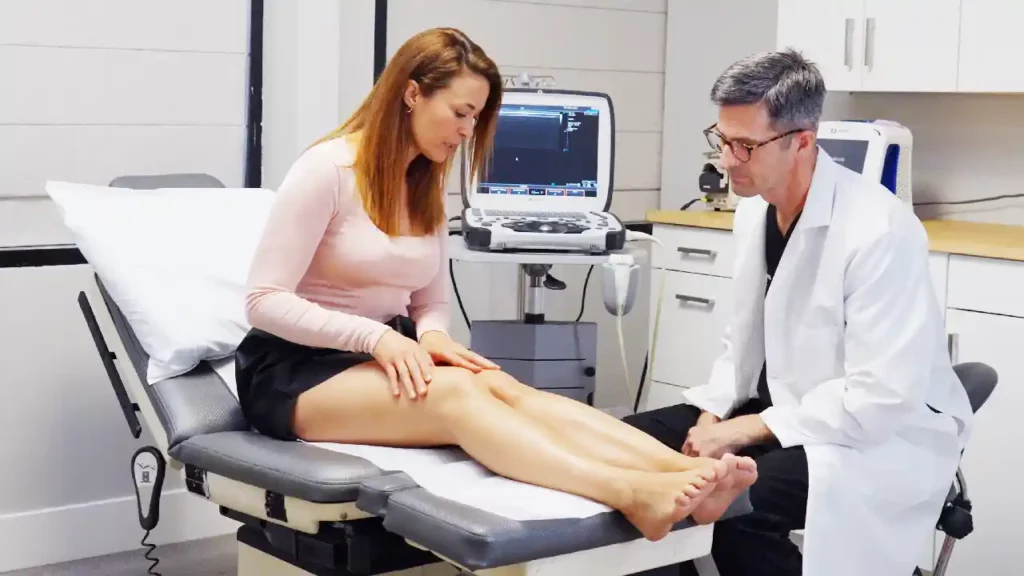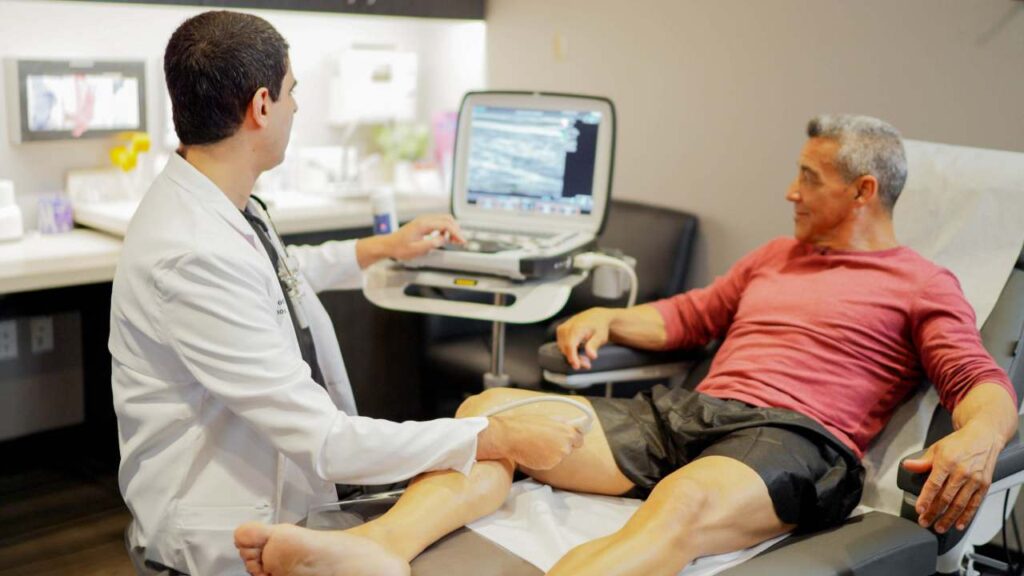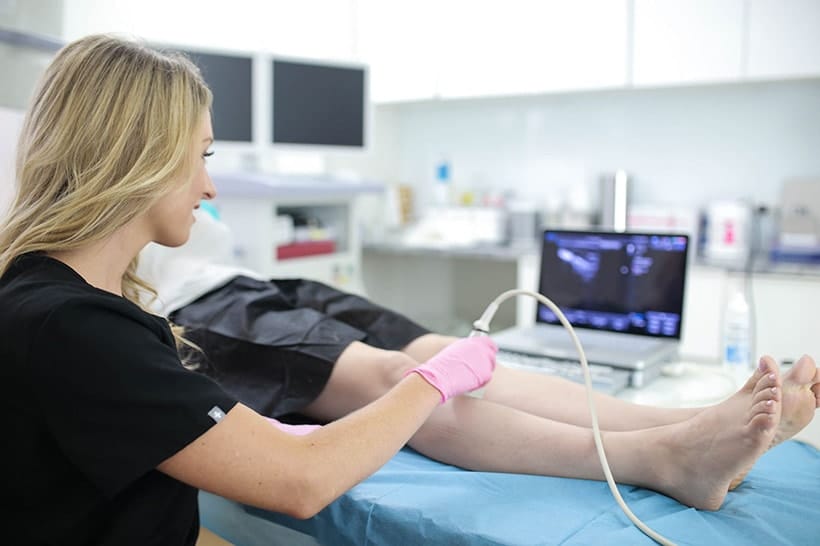What Can Get Rid of Varicose Veins Naturally?
If you have the twisted, engorged veins known as varicose veins, you likely have a vein disease called Chronic Venous Insufficiency. This condition is very common, and in addition to the unappealing varicose veins, it can also cause symptoms like leg swelling, heaviness, cramping, restlessness, and a host of other issues if left untreated. Many patients wonder if venous insufficiency can be cured at home or if they need to see a vein doctor.
The underlying issue in venous insufficiency is valve failure inside a vein that allows blood to pool, which is called venous stasis. This elevates pressure against the vein walls, causing the blood vessel to bulge and contort into a varicosity. There are no natural cures for malfunctioning valves, so click HERE to seek medical treatment at our esteemed California vein center. Read on to learn how you can minimize symptoms at home and what to expect with varicose veins treatment.

Are There Any DIY Varicose Veins or Spider Veins Treatments?
There are no DIY varicose veins or spider veins treatments that will cure Chronic Venous Insufficiency. However, there are some things you can try at home, like wearing compression stockings, to minimize the severity and progression of the disease. Book a consultation with our California vein doctors before trying any DIY tactics. Here are some tips we might recommend, depending on your medical history.
- Elevate your legs while resting.
- Limit the amount of time spent sitting or standing in one position.
- Wear compression stockings that are fitted by a vein doctor.
- Stay active and avoid a sedentary lifestyle.
- Manage your weight.
- Avoid smoking and excessive salt consumption.
- If venous insufficiency impacts skin, use good hygiene and antibiotics if prescribed.
Do All Veins Popping out on Legs Require Treatment?
Some veins become enlarged temporarily, for instance, during pregnancy when blood volume increases. These thick veins may resume their natural size on their own when the causative issue is resolved. However, most enlarged veins that are popping out beneath the surface of the skin are likely varicose veins that won’t resolve on their own. Not every varicosity requires treatment. Some are asymptomatic and don’t bother the patient.
But others are the sign of vein disease and circulation that’s impaired to the point of causing risks and significant symptoms for the patient. The only way to know if your bulging veins need treatment is to visit our award-winning vein center. Our San Diego and San Jose vein specialists are experts at determining whether treatment is needed and the best varicose veins treatment to choose. We only use minimally invasive procedures to treat veins and vein diseases, so treatment is fast, gentle, and easy with our vein doctors.
Are Engorged Veins Treatments Painful?
Engorged veins treatments used to involve surgical extraction, which is a painful procedure, followed by a painful recovery. But the latest treatments address the issue inside the body with minimally invasive methods including sclerotherapy, radiofrequency ablation, laser therapy, vein adhesives, and mechanochemical ablation. These treatments are so gentle that they don’t require general anesthesia, and some don’t even need a local anesthetic.
The most you’ll feel with our advanced techniques is a pinch at the treatment site, which only lasts a few minutes. Some patients have mild swelling or discomfort for a day or two, but it is negligible enough that they can resume all their usual activities. Treating venous insufficiency is a quick and comfortable process, completed in-office in under an hour.
What’s the Best Treatment for Varicose Veins in Legs?
The best treatment for varicose veins in legs is one that considers the cause of the varicosity. Small spider veins in the face can be caused by sun damage or skin injury. But varicose veins in the legs typically stem from valve failure in a deeper vein. Leg veins must pump blood all the way to the heart against gravity, which means vein issues in the legs are frequently linked to a valve that succumbed to pressure, rather than factors like external injuries.
Unaddressed, faulty valves will continue to produce spider veins and varicose veins, so choose a vein doctor who identifies and treats venous insufficiency, not just superficial vein damage. The right method depends on the patient’s symptoms, preferences, and medical history and typically involves sclerotherapy, radiofrequency ablation, mechanochemical ablation, vein adhesives, or a combination of methods.
Is There a Different Treatment for Varicose Veins in Arms?
Varicose veins and venous insufficiency are most common in the legs, due to the distance blood must travel from the feet to the heart while resisting gravity and our body weight. However, varicose veins are possible anywhere, including the arms. Treatment for varicose veins in arms is similar to leg veins, and will depend on the severity of the varicosity, as well as the overall health of the patient.
Vein stripping surgery is almost never required, unless the patient has failed other treatments at a different vein center or has a history of blood clots. Most patients are treated with Varithena, ClariVein, VNUS Closure, VenaSeal, or another minimally invasive procedure. If the varicose vein in your arm does not require treatment, our doctors will let you know, and you can decide whether to proceed for aesthetic purposes.
Do Men Get Spider Veins & Should They Treat Them?
Gender and hormones cause more women than men to develop vein damage. However, many men get spider veins and varicose veins, and treatment is equally important. These defective blood vessels are especially common in men who are sedentary or overweight, as well as those whose profession requires extensive sitting or standing- for instance, professors, surgeons, commercial drivers, security guards, and cashiers. Talk to our caring team about ways to treat your spider veins or varicose veins and steps to prevent more from appearing.
Is There a Specific Varicose Veins Pregnancy Treatment?
Veins frequently become enlarged or engorged during pregnancy for three reasons. First, blood volume increases during pregnancy to supply the fetus with oxygen and nutrients. Second, blood pressure increases during pregnancy, which has a direct impact on vein walls and valves. And third, hormonal shifts like pregnancy impact blood pressure and increase the risk of varicose veins.
Some enlarged veins will reduce in size after delivery. But others will remain engorged and can become symptomatic. Issues like blood clots are also possible during pregnancy and following surgeries like a cesarean section. If you notice new varicose veins in pregnancy, treatment might be required, but it will need to wait until your pregnancy is over. Ask your vein doctor when the best time is to treat pregnancy-related varicose veins. It will likely be three months or more after delivery. Treatment options for varicose veins caused by pregnancy are the same as treatment for other varicosities.
Varicose Veins Stages: What Happens to Untreated Veins?
Some varicose veins never become problematic. But many others lead to venous ulcerations, hyperpigmentation, profuse bleeding, leg swelling, leg pain, restless sleep, dermatitis, and more. In addition, the venous insufficiency behind varicose veins can cause additional spider veins and varicose veins to form, increasing symptoms and discomfort. Treat your venous insufficiency early before symptoms and skin damage become harder to control. Treating one varicose vein and the valve that caused it prevents complications down the road.
Are All Thick Veins in Upper Thigh or Calf Varicosities?
Some thick veins are simply larger than others. For example, the average vein is 1-1.5 mm in diameter, but the great saphenous vein (the largest and longest vein in the body) averages 3-5 mm in diameter. A blood vessel that looks like a thick vein, compared to surrounding veins, may not be varicose. But if the vein is twisted, bright purple, red, or blue, and bulging above the surface, it’s likely a varicose vein.
Are All Red Veins on Legs Worth Getting Rid of?
For some bright purple, blue, or red veins on the legs, getting rid of them is optional. This is particularly true of spider veins, which are smaller than varicose veins and typically less symptomatic. However, many damaged veins do require treatment, from a medical perspective, and others warrant treatment to improve the patient’s self-confidence and quality of life. If you’re wondering, “Can venous insufficiency be cured?” or, “Do spider veins and varicose veins need treatment?”, visit our Harvard-trained vein doctors for customized solutions.
Where Can Venous Insufficiency Be Cured Near Me?
Treating venous insufficiency early vastly improves the outcome. Book an appointment today at our San Diego vein center at 5330 Carroll Canyon Rd., by calling (858) 771-9887. Or, schedule a consultation in San Jose at 1270 S. Winchester Blvd., by calling (858) 251-8858. We look forward to hearing from you and resolving your venous insufficiency!






